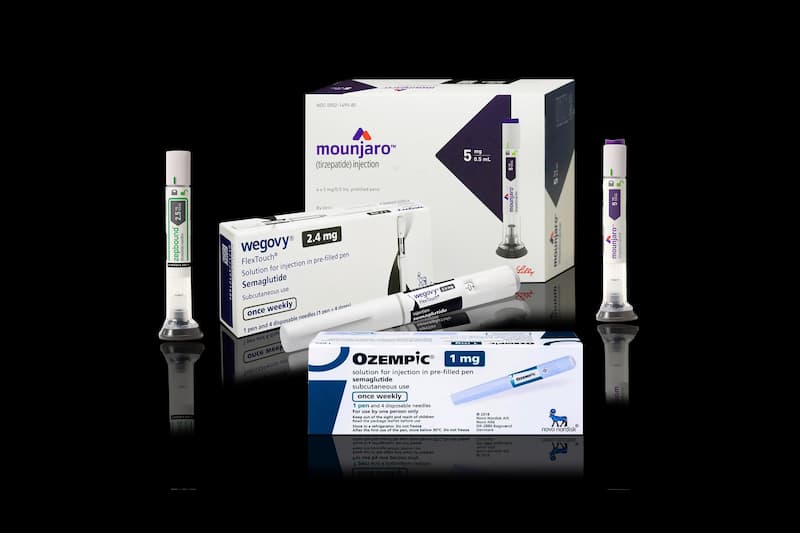How Sublingual Semaglutide Eases Digestive Side Effects

When you start taking a GLP-1 medication for weight management, the digestive side effects can feel as significant as the appetite changes themselves. In fact, your stomach might start negotiating its own peace treaty while your appetite’s on strike.
As your body adjusts, you might experience nausea or changes in bowel habits. These effects are common because GLP-1 receptor agonists slow gastric emptying and influence gut hormones. This change helps with appetite regulation, but it can also make your stomach feel unsettled. Understanding why these symptoms happen is the first step toward managing them effectively.
You might already be familiar with FDA-approved GLP-1 medications such as Ozempic®, Wegovy®, or Mounjaro®, all injectable forms. While they’ve shown significant benefits in clinical trials, they also have well-documented gastrointestinal effects. Let’s just say your digestive system might not be thrilled about joining the injection program at first.
When you discuss your weight management plan with a licensed provider, you may be offered compounded options prepared by licensed compounding pharmacies, including sublingual semaglutide. Compounded medications are not FDA-approved, but providers may prescribe them as medically appropriate to meet patient needs.
Sublingual delivery options available through compounding pharmacies may offer a potentially gentler ride for your stomach. Here’s how.
What Sublingual Semaglutide Is and How It’s Taken
Sublingual semaglutide is a compounded formulation designed to be placed under the tongue instead of injected. Hold the drops under your tongue for a bit, and the medication slips directly into your bloodstream through the mucous membranes. It’s a secret shortcut that bypasses your digestive tract. The medication does not travel the long, windy road through the gastrointestinal system.
When used under a licensed provider’s guidance, the formulation comes from a compounding pharmacy that follows state and USP standards. This method may be a good fit if injections make you cringe, pills are tough to swallow, or your stomach gets upset easily. While it’s not FDA-approved, it is a medically supervised option some patients may want to consider. Plus, because you can buy this prescription weight loss medication online, it’s as easy as pie.
Why Digestive Side Effects Happen Less with Sublingual Delivery
One of the main reasons you might experience fewer digestive issues with sublingual semaglutide is the way the medication enters your system. Instead of taking the scenic route through your stomach, it sneaks straight into your bloodstream via the tissue under your tongue. Any drugs you swallow pass through the gastrointestinal tract, potentially irritating the stomach and slowing digestion, causing nausea or discomfort. Sublingual delivery avoids the stomach pit stop.
If you’ve ever felt queasy after taking an oral medication on an empty stomach, you know how irritating direct GI exposure can be. Sublingual delivery sidesteps that drama, letting you enjoy semaglutide’s benefits with less stomach fuss. Of course, everyone’s experience is different, and you’ll still need to follow your provider’s instructions closely.
Practical Benefits of Sublingual Semaglutide for You
If injections or digestive discomfort have made GLP-1 therapy feel like an obstacle course, sublingual semaglutide can be a smoother, more approachable path. Here’s how it might help:
- Reduced Stomach Irritation: Because the drops are absorbed under your tongue, you may experience fewer nausea-inducing effects than oral or injected semaglutide. This does not mean the medication is risk-free, but it can be gentler for some people.
- Needle-Free Convenience: You don’t have to prepare a shot, dispose of needles, or deal with injection-site discomfort. This makes your weight management plan easier to stick with over time.
- Flexible Dosing Under Supervision: Your provider may tailor your compounded prescription and dosing schedule to your needs, which can help you stay consistent with treatment.
Each of these advantages can boost your long-term success. The fewer hurdles you face, mental or physical, the more likely you are to stick with your prescribed plan.
How to Use Sublingual Semaglutide Safely
Using sublingual semaglutide is straightforward, but following your provider’s directions to a “T” is key. Typically, you’ll place the prescribed number of drops under your tongue and hold them there for a set time before swallowing, letting the medication travel right into your bloodstream.
Pay attention to timing, food, and drink. Your provider may recommend avoiding eating or drinking briefly before or after taking the drops to give absorption a clear runway. Always work with a licensed provider and a reputable compounding pharmacy to keep your prescription safe and effective.
Comparing Sublingual Semaglutide with Other Forms
If you’re deciding between injections, oral tablets, and sublingual drops, it helps to think of it like choosing a travel route. Each has bumps and shortcuts, but you and your doctor decide which is best for you.
Injectable semaglutide has the most clinical evidence, but it also involves needles and may cause more direct gastrointestinal effects. Oral tablets can be convenient but take the long road through your stomach, which can stir up side effects. Sublingual drops can bypass the digestive tract, which may ease those symptoms for some patients.
This isn’t about which form is “best” or guaranteeing results. It’s about understanding the differences in delivery, absorption, and potential side effects so you can make an informed choice. Your provider can help you determine whether sublingual semaglutide fits based on your medical history, lifestyle, and treatment goals.
What to Discuss with Your Provider Before Starting
Before starting sublingual semaglutide, have a thorough chat with your healthcare provider. Bring up your history of gastrointestinal issues, your comfort level with injections, and any medications you’re currently taking. Ask your provider:
- How will my dose be adjusted over time?
- What side effects should I watch for?
- How do I ensure I receive my prescription from a licensed compounding pharmacy?
These questions help you stay informed and ensure the safety of your treatment. When it comes to compounded medications, it’s always better to ask twice than to guess once.
Why Work with a Provider-Supervised Compounding Service
Digestive side effects can make sticking with a weight management plan feel like running a marathon in flip-flops, but sublingual semaglutide may provide a gentler route. Bypassing your digestive system may reduce the nausea or discomfort you’ve experienced with other forms of GLP-1 therapy.
When you choose a telehealth service like Direct Meds, you’re tapping into licensed providers who review your medical history and prescribe compounded formulations when appropriate. The medications are prepared by licensed compounding pharmacies that follow state board and USP standards. This oversight ensures your semaglutide is dispensed responsibly and that you have support throughout your weight management journey.
Direct Meds emphasizes transparency and education, so you understand precisely what you take and why. You’re not left to navigate the complexities of compounded medications on your own. Professional guidance is there every step of the way.
With the proper medical guidance, you can find a GLP-1 plan that fits your needs, minimizes side effects, and keeps you on track toward your health goals (without the stomach sabotage).


